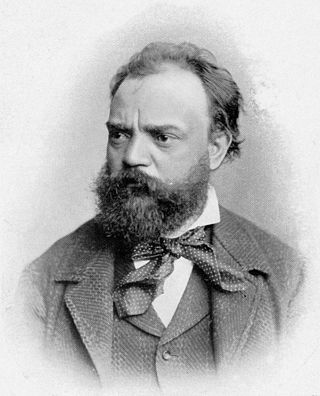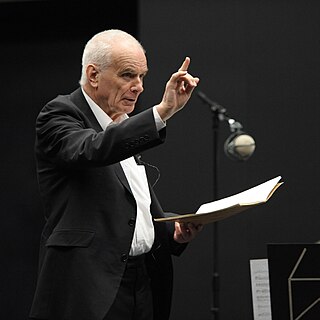The Symphony No. 2 in E minor and C major by Arnold Bax was completed in 1926, after he had worked on it for two years. It was dedicated to Serge Koussevitzky, who conducted the first two performances of the work on 13 and 14 December 1929.
The Symphony No. 2 in E minor and C major by Arnold Bax was completed in 1926, after he had worked on it for two years. It was dedicated to Serge Koussevitzky, who conducted the first two performances of the work on 13 and 14 December 1929.
It is scored for piccolo, three flutes, two oboes, English horn, three clarinets, bass clarinet, two bassoons, double bassoon, four horns, three trumpets, two tenor trombones, bass trombone, euphonium, bass tuba, timpani, bass drum, tambourine, cymbals, xylophone, glockenspiel, celesta, piano, two harps, organ and strings.
It is in three movements:
The opening movement is noted for its complex orchestration. The orchestra is unusually large for Bax, with the organ used solely for pedals to add a dark effect. The thematic material for the entire symphony is laid out in the Molto moderato introduction of the first movement. The Allegro moderato section which follows is a further development of the introductory material, as is the more lyrical second subject. The movement ends with the sonorous theme which was first stated by the lower woodwinds at the beginning of the symphony. A typical performance of this movement lasts 16 minutes.
The second movement begins with an ostinato on harp and the flutes, which eventually develops into a beautiful melody that forms a basis for the development of the movement. A quotation of Bax's tone poem In Memoriam is used[ citation needed ], and motifs are quoted from the opening movement of the symphony. A typical performance of this movement lasts 12 minutes.
The final movement continues to use the main thematic material, with a short Poco largamente introduction followed by a fast, furious Allegro feroce section. A direct quotation from the first movement is used, the main climax of the piece is reached just before the epilogue in which the symphony fades into unresolved tranquility. A typical performance of this movement lasts 11 minutes.
Symphony No. 3 was Aaron Copland's final symphony. It was written between 1944 and 1946, and its first performance took place on October 18, 1946 with the Boston Symphony Orchestra performing under Serge Koussevitzky. If the early Dance Symphony is included in the count, it is actually Copland's fourth symphony.

The Symphony No. 2 in D major, Op. 43, by Jean Sibelius was started in winter 1901 in Rapallo, Italy, shortly after the successful premiere of the popular Finlandia, and finished in 1902 in Finland. Sibelius said, "My second symphony is a confession of the soul."
The Young Person's Guide to the Orchestra, Op. 34, is a 1945 musical composition by Benjamin Britten with a subtitle Variations and Fugue on a Theme of Purcell. It was based on the second movement, "Rondeau", of the Abdelazer suite. It was originally commissioned for the British educational documentary film called Instruments of the Orchestra released on 29 November 1946, directed by Muir Mathieson and featuring the London Symphony Orchestra conducted by Malcolm Sargent; Sargent also conducted the concert première on 15 October 1946 with the Liverpool Philharmonic in the Philharmonic Hall, Liverpool, England.

The Symphony No. 5 in E-flat major, Op. 82, by Jean Sibelius is a symphony in three movements.

The Symphony No. 3 in C major, Op. 52, by Jean Sibelius is a symphony in three movements composed in 1907. Coming between the romantic intensity of Sibelius's first two symphonies and the more austere complexity of his later symphonies, it is a good-natured, triumphal, and deceptively simple-sounding piece. The symphony's first performance was given by the Helsinki Philharmonic Society, conducted by the composer, on 25 September 1907. In the same concert, his suite from the incidental music to Belshazzar's Feast, Op. 51, was also performed for the first time. It is dedicated to the British composer Granville Bantock, an early champion of his work in the UK.

The Symphony No. 4 in D minor, Op. 13, B. 41, is a classical composition by Antonín Dvořák.
The Symphony No. 6 by Arnold Bax was completed on February 10, 1935. The symphony is dedicated to Sir Adrian Boult. It is, according to David Parlett, "[Bax's] own favourite and widely regarded as his greatest ... powerful and tightly controlled". It was given its world premiere by the Royal Philharmonic on November 21 of the year of composition, 1935.
The Symphony No. 3 by Arnold Bax was completed in 1929. It was dedicated to Sir Henry Wood and is perhaps the most performed and most immediately approachable of Bax's symphonies.
The Symphony No. 1 by Arnold Bax was completed in 1922 and dedicated to John Ireland. Its outer movements were based on a Piano Sonata in E♭ that Bax subsequently orchestrated, while the central movement was newly composed for the symphony.
The Symphony No. 4 by Arnold Bax was completed in 1930 and dedicated to Paul Corder. It was inspired by Bax's love of the sea and premiered in 1931 by British conductor Basil Cameron and the San Francisco Symphony Orchestra.
The Symphony No. 5 by Arnold Bax was completed in 1932 and dedicated to Jean Sibelius. It is in many ways heavily influenced by Sibelius.
The Symphony No. 6 in E-flat minor, Op. 23 by Nikolai Myaskovsky was composed between 1921 and 1923. It is the largest and most ambitious of his 27 symphonies, and uses a chorus in the finale. It has been described as "probably the most significant Russian symphony between Tchaikovsky's Pathétique and the Fourth Symphony of Shostakovich". The premiere took place at the Bolshoi Theatre, Moscow on 4 May 1924, conducted by Nikolai Golovanov and was a notable success.
Symphony No. 2 in E minor was written by Wilhelm Furtwängler between 1945 and 1946 in Switzerland. It is in four movements:
Rustic Wedding Symphony, Op. 26 is a symphony in E flat major by Karl Goldmark, written in 1875, a year before his renowned Violin Concerto No. 1. The symphony was premiered in Vienna on 5 March 1876, conducted by Hans Richter. Johannes Brahms, who was a frequent walking companion of Goldmark's, and whose own Symphony No. 1 was not premiered until November 1876, told him "That is the best thing you have done; clear-cut and faultless, it sprang into being a finished thing, like Minerva from the head of Jupiter". Its first American performance was at a New York Philharmonic Society concert, conducted by Theodore Thomas on 13 January 1877.
The Symphony No. 1 in C major by Mily Balakirev was commenced as early as 1864, but was not completed until 1898. It is scored for three flutes, oboe, English horn, three clarinets, two bassoons, four horns, two trumpets, three trombones, tuba, timpani, triangle, cymbals, snare drum, bass drum, two harps, first and second violins, violas, cellos and double basses.
The Third Symphony by Alfred Schnittke was his fourth composition in the symphonic form, completed in 1981.

The Symphony No. 2 by Peter Maxwell Davies was commissioned by the Boston Symphony Orchestra in celebration of its centenary, and was composed in 1980. Seiji Ozawa conducted the world premiere with the BSO on 26 February 1981 at Symphony Hall, Boston. The same forces performed the New York premiere on 4 March that year at Carnegie Hall.
Symphony No. 6 by Russian composer Alfred Schnittke was composed in 1992. It was commissioned by cellist and conductor Mstislav Rostropovich and the National Symphony Orchestra of Washington, who together gave its first performance in Moscow on 25 September 1993.
The Symphony No. 4 Op. 60 is a work for solo piano and orchestra written by the Polish composer Karol Szymanowski between March and June of 1932. It is dedicated to the pianist Arthur Rubinstein. Szymanowski himself played the piano part at the premiere performance on 9 October 1932, with Grzegorz Fitelberg conducting the Poznań City Orchestra.
The Symphony No. 3 in B minor by the Ukrainian composer Borys Lyatoshynsky was completed in 1951, with the final movement themed "Peace will conquer war." The symphony was first performed in Kyiv on 23 October 1951, by the Kyiv Philharmonic, conducted by Natan Rakhlin. Criticised by the Soviet authorities on ideological grounds, the composer was forced to rework the symphony, and to remove the subtitle of the finale. The first performance of the revised version took place in Leningrad in 1955.